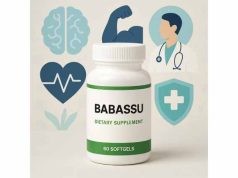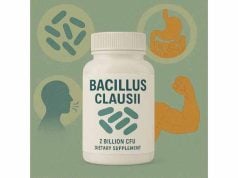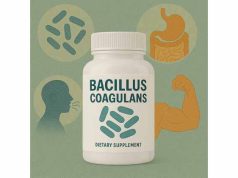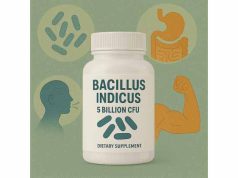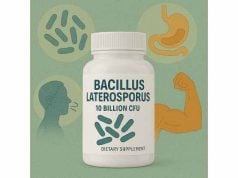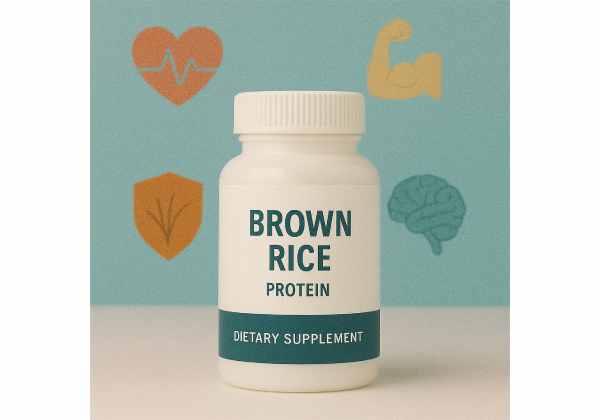
Brown rice protein has earned a reputation as one of the most accessible, allergy-friendly, and easily digestible plant-based protein sources. Extracted from whole brown rice grains, it delivers a well-balanced amino acid profile suitable for athletes, vegans, and anyone seeking a dairy-free, soy-free protein alternative. Not only does it support muscle repair and growth, but brown rice protein is also gentle on digestion and low in allergens, making it ideal for sensitive individuals. With benefits ranging from weight management and heart health to satiety and lean muscle support, brown rice protein is a smart choice for anyone pursuing clean nutrition without compromise.
Key Takeaways
- Brown rice protein is a hypoallergenic, vegan-friendly alternative to whey and soy.
- Contains a full spectrum of essential amino acids to support muscle health.
- Gentle on digestion, suitable for people with food sensitivities or allergies.
- May help with weight management, muscle recovery, and blood sugar balance.
- Choose high-quality, third-party tested products for optimal safety and efficacy.
Table of Contents
- Brown Rice Protein Overview: What It Is and How It’s Made
- Scientific Basics: Brown Rice Protein Amino Acid Profile and Absorption
- Health Benefits and Evidence-Based Uses of Brown Rice Protein
- Brown Rice Protein Safety, Side Effects, and Ingredient Interactions
- Best Practices: Dosage, Timing, and Usage of Brown Rice Protein
- Brown Rice Protein FAQs: Common Questions Answered
Brown Rice Protein Overview: What It Is and How It’s Made
Brown rice protein is a concentrated protein powder made from sprouted or whole-grain brown rice. Through a natural enzymatic process, carbohydrates and fibers are separated from the protein fraction, resulting in a powder that’s about 70–90% protein by weight, depending on the brand and method of extraction.
What Sets Brown Rice Protein Apart?
- Plant-Based and Allergen-Friendly: Unlike dairy-based whey or casein, and unlike soy, brown rice protein contains no common allergens, making it suitable for nearly all dietary restrictions—including vegan, vegetarian, gluten-free, and dairy-free diets.
- Easily Digestible: The gentle extraction process preserves enzymes and nutrients while producing a protein source that is less likely to cause bloating, gas, or digestive distress.
- Clean Nutrition: Brown rice protein is free from cholesterol and typically low in saturated fat, making it a heart-healthy choice for people seeking lean plant protein.
- Sustainable Source: As rice is one of the world’s most widely grown crops, brown rice protein supports eco-friendly, plant-based nutrition.
How Is It Produced?
- Harvesting: Whole brown rice grains are harvested and cleaned.
- Sprouting (Optional): Some products use sprouted brown rice, which may enhance digestibility and nutrient absorption.
- Enzymatic Processing: Natural enzymes are added to break down carbohydrates and separate the protein from the fiber and starch.
- Filtration and Drying: The protein-rich fraction is filtered, concentrated, and then spray-dried into a fine powder.
- Testing and Packaging: The powder is tested for purity, heavy metals, and contaminants before being packaged for sale.
Key Features in the Final Product
- Neutral flavor profile, easily blended into smoothies, shakes, and recipes
- Naturally gluten-free and soy-free
- May be combined with other plant proteins (such as pea or hemp) for a more complete amino acid spectrum
Brown Rice Protein in the Marketplace
With growing demand for non-dairy, plant-based proteins, brown rice protein is now widely available in health food stores, online retailers, and mainstream supermarkets. It’s often sold as a single-ingredient powder or in multi-plant blends, and is used in protein bars, meal replacements, and performance shakes.
Summary
Brown rice protein is a versatile, sustainable, and inclusive protein supplement ideal for modern dietary preferences and wellness goals. It’s the foundation of plant-powered nutrition for muscle, metabolism, and total-body health.
Scientific Basics: Brown Rice Protein Amino Acid Profile and Absorption
The scientific value of brown rice protein comes from its comprehensive amino acid content and its gentle, gut-friendly absorption. Understanding these elements can help you see why this protein stands out among plant-based options.
Amino Acid Composition
Brown rice protein offers a broad spectrum of amino acids, including all nine essential amino acids (EAAs) that the body cannot produce on its own. While it is sometimes labeled “incomplete” due to a slightly lower lysine content, the difference is minimal—especially when consumed as part of a diverse, balanced diet.
- High in Cysteine and Methionine: These sulfur-containing amino acids support detoxification, antioxidant production, and muscle health.
- Moderate in Lysine: Lysine is the only slightly limiting EAA, but blending with other plant proteins (such as pea protein) creates a complete profile.
- Glutamine and Arginine: High levels support muscle repair, immune health, and recovery.
Biological Value and Absorption
- Digestibility: Brown rice protein has a digestibility similar to that of other plant proteins, such as pea or hemp. It’s typically easier on the stomach than whey for those with lactose intolerance.
- Bioavailability: Absorption rates are high—studies show rice protein is nearly as effective as whey protein for supporting muscle growth and recovery when used consistently.
- Gut Health: The gentle extraction process preserves rice’s natural enzymes, making it a suitable choice for people with sensitive digestion or food allergies.
Additional Nutritional Benefits
- Contains small amounts of B-vitamins, iron, phosphorus, and magnesium naturally found in rice
- Free from lactose, gluten, and cholesterol
- Typically non-GMO and sometimes organic
How It Compares to Other Proteins
- Vs. Whey Protein: Brown rice protein is dairy-free, hypoallergenic, and less likely to cause digestive upset or allergic reactions.
- Vs. Soy Protein: Free from phytoestrogens and a common allergen, making it suitable for those avoiding soy.
- Vs. Pea or Hemp Protein: Comparable in protein content and digestibility; often blended together for optimal amino acid balance.
Summary
Brown rice protein provides a rich array of amino acids, is well-tolerated by sensitive individuals, and delivers muscle and recovery support comparable to animal-based proteins when used correctly.
Health Benefits and Evidence-Based Uses of Brown Rice Protein
Brown rice protein’s rise in popularity is driven by a combination of research-backed benefits and user experiences across fitness, weight management, and daily nutrition. Here’s how this clean protein source can support your health:
1. Supports Lean Muscle Growth and Recovery
- Muscle Protein Synthesis: Supplies all essential amino acids necessary for building and repairing muscle tissue. Comparable to whey protein in studies on muscle gain and post-workout recovery.
- Strength and Endurance: Plant-based athletes and active individuals use brown rice protein to promote strength gains and support high-performance training.
2. Weight Management and Satiety
- Appetite Control: High-protein foods and supplements increase feelings of fullness, making it easier to reduce calorie intake and manage weight.
- Metabolic Support: Protein requires more energy to digest (the thermic effect), subtly boosting calorie burn compared to carbs or fats.
3. Heart and Metabolic Health
- Low in Saturated Fat and Cholesterol: Ideal for those watching heart health or cholesterol levels.
- Blood Sugar Regulation: Slow absorption and minimal effect on blood glucose make it suitable for those managing insulin sensitivity.
4. Allergy-Friendly Nutrition
- Free from Dairy, Gluten, and Soy: Safe for those with lactose intolerance, celiac disease, or soy allergies.
- Gut-Friendly: Well-tolerated by most, with minimal risk of bloating or digestive upset.
5. Environmental and Ethical Advantages
- Sustainable: Produced from a globally available crop, with a lower environmental impact than animal-based proteins.
- Vegan and Vegetarian: Fulfills protein needs for those seeking animal-free nutrition.
6. Versatile in Everyday Use
- Easy to Add: Mixes well into smoothies, shakes, energy balls, oatmeal, and baked goods.
- Meal Replacement and Snacking: Forms the base of many vegan meal shakes and bars.
7. May Support Immune and Skin Health
- Natural amino acids support healthy immune function and collagen production for skin repair and maintenance.
Limitations to Consider
- Slightly lower lysine content can be easily compensated for by consuming complementary plant proteins or a diverse diet.
- Some products may contain added flavors, sweeteners, or fillers—choose simple, clean labels.
Summary
Brown rice protein is a proven, accessible, and effective plant-based supplement for muscle support, satiety, metabolic health, and more. Its gentle profile makes it an outstanding choice for nearly any dietary pattern or goal.
Brown Rice Protein Safety, Side Effects, and Ingredient Interactions
Brown rice protein is celebrated for being gentle on the system, but understanding its safety, potential side effects, and interactions with other ingredients is essential for making informed choices.
General Safety and Tolerability
Brown rice protein is naturally hypoallergenic and free from most common allergens, including dairy, gluten, soy, and eggs. This makes it especially safe for those with multiple food sensitivities. Its clean processing further minimizes the risk of contaminants.
Potential Side Effects
- Digestive Upset: For most, brown rice protein is easy on the gut. Rarely, new users might notice mild bloating, gas, or changes in stool, particularly if consuming large quantities quickly or not accustomed to a high-protein diet. These symptoms typically subside as the digestive system adjusts.
- Heavy Metal Concerns: As rice plants may absorb heavy metals (especially arsenic) from soil and water, it’s crucial to select brown rice protein from reputable manufacturers that provide third-party testing for contaminants. The risk is greatly reduced in high-quality, certified products.
- Allergic Reactions: True rice allergies are rare. Still, if you have a known rice allergy, avoid brown rice protein entirely and consult your healthcare provider for alternatives.
- Protein Excess: Consuming any protein in excessive amounts (well above daily requirements) can burden the kidneys and liver over time, especially in those with pre-existing renal conditions.
Interactions with Other Supplements and Foods
- Mixing with Other Proteins: Brown rice protein is often combined with pea protein or hemp protein to enhance its amino acid profile and balance lysine content.
- With Medications: There are no known direct interactions with common medications, but extremely high-protein diets can sometimes affect certain kidney or gout medications due to increased nitrogen waste.
- Digestive Enzyme Supplements: Adding digestive enzymes can further boost protein absorption, especially in those with sensitive digestion or compromised gut health.
Considerations for Special Populations
- Pregnant or Breastfeeding Women: Brown rice protein is generally considered safe during pregnancy and lactation when used as part of a balanced diet, but always consult your healthcare provider to ensure it meets your individual needs.
- Children and Teens: Can be a good protein source for vegetarian or vegan kids, provided their total protein and calorie needs are met through diverse foods.
- Older Adults: Supports muscle retention and healthy aging but should be incorporated with other high-protein foods for a balanced amino acid intake.
Label Reading and Product Selection
- Check for Additives: Opt for unflavored, unsweetened varieties if you wish to avoid artificial flavors, sweeteners, or unnecessary fillers.
- Organic and Non-GMO: Look for organic and non-GMO certifications for the cleanest possible source.
- Third-Party Testing: Always choose products with third-party lab reports confirming purity and low heavy metal content.
When to Use Caution or Seek Medical Advice
- Diagnosed kidney or liver disease
- Prior allergic reactions to rice or rice-based products
- Significant unexplained digestive symptoms after starting supplementation
Summary
Brown rice protein is one of the safest and best-tolerated plant proteins, with very few risks for healthy individuals when consumed in moderation. Choose high-quality brands and pay attention to your body’s signals to maximize benefits and minimize any issues.
Best Practices: Dosage, Timing, and Usage of Brown Rice Protein
Optimal use of brown rice protein can help you meet your daily protein goals, support muscle growth, and enhance recovery—all while fitting seamlessly into your routine.
Recommended Dosage
- General Health: 15–30 grams of brown rice protein powder per day (providing roughly 12–25 grams of protein) is typical for most adults. This can replace or supplement other dietary protein sources.
- Active Individuals/Athletes: Post-workout shakes often contain 20–30 grams of protein per serving. For muscle gain or heavy training, some athletes may use two servings per day.
- Meal Replacement: If using as a meal replacement, combine brown rice protein with healthy fats (nut butters, coconut oil) and complex carbs (oats, fruit) for a balanced nutrient profile.
Best Times to Use Brown Rice Protein
- Post-Workout: Consumed within 30–60 minutes after exercise, it supports muscle repair and growth.
- Breakfast/Snacks: Blends well into smoothies or oatmeal to boost morning satiety and keep energy steady.
- Between Meals: Used as a convenient, filling snack to curb cravings and support weight loss.
How to Incorporate Brown Rice Protein
- Smoothies and Shakes: Blends smoothly with almond milk, fruits, greens, and nut butters.
- Baked Goods: Add to muffins, pancakes, or homemade protein bars for a nutrition upgrade.
- Oatmeal or Porridge: Stir into hot cereals for a protein-rich breakfast.
- Savory Dishes: Mix unflavored powder into soups, stews, or veggie burgers for a subtle protein boost.
Pairing for Optimal Results
- With Other Plant Proteins: Combining with pea, hemp, or chia protein creates a “complete” amino acid profile.
- With Carbohydrates: A carb source post-workout can help shuttle amino acids into muscles and speed recovery.
Maximizing Absorption and Effectiveness
- Hydration: Drink plenty of water, as increased protein intake slightly raises hydration needs.
- Consistent Timing: Consistent daily use is more effective for muscle retention and metabolic benefits than sporadic supplementation.
- Whole-Food Context: Brown rice protein works best as part of a diverse, whole-foods diet, rich in vegetables, fruits, healthy fats, and whole grains.
Special Populations and Adjustments
- Children, Pregnant or Nursing Women, Elderly: Lower doses are appropriate, and brown rice protein should supplement (not replace) other whole-food protein sources.
- Medical Conditions: Consult a healthcare provider for personalized guidance if you have kidney, liver, or metabolic concerns.
Signs to Reduce or Pause Use
- Bloating, digestive discomfort, or changes in bowel habits that persist
- Unexplained fatigue or malaise (rare)
- Any allergic reaction
Summary
For most adults, 15–30 grams daily is a safe and effective dose, easily tailored to your activity level and nutrition needs. Creative use in meals and snacks maximizes its value for both taste and health.
Brown Rice Protein FAQs: Common Questions Answered
Is brown rice protein a complete protein?
Brown rice protein provides all nine essential amino acids, but is slightly lower in lysine. Pairing it with other plant proteins (like pea) or a varied diet ensures a complete profile for muscle support.
Is brown rice protein safe for people with food allergies?
Yes, it’s naturally free of dairy, soy, gluten, and eggs, making it ideal for those with allergies or sensitivities. Rare rice allergies exist; avoid if you have a known rice allergy.
Can brown rice protein help with weight loss?
Yes. High-protein foods increase satiety and preserve lean muscle during calorie restriction, aiding fat loss and healthy weight management.
How does brown rice protein compare to whey protein?
Brown rice protein is plant-based, hypoallergenic, and nearly as effective as whey for building muscle when consumed in similar quantities. It’s gentler on digestion for most people.
Are there heavy metals in brown rice protein?
Quality brands test for arsenic, lead, and other contaminants. Choose products with third-party testing to ensure safety and purity.
What’s the best way to use brown rice protein in recipes?
Blend into smoothies, shakes, oatmeal, or baked goods. Unflavored powders can be added to soups or veggie dishes for extra protein without altering flavor.
Can children and older adults use brown rice protein?
Yes, in appropriate amounts. It’s a good option for plant-based diets or increased protein needs, but should supplement, not replace, a diverse diet.
Disclaimer:
This article is for educational purposes only and is not intended as a substitute for medical advice, diagnosis, or treatment. Always consult your healthcare provider before beginning any supplement, especially if you have underlying health conditions, are pregnant or nursing, or are planning significant dietary changes.
If you found this guide helpful, please share it on Facebook, X (formerly Twitter), or your favorite platform. Don’t forget to follow us for more science-backed wellness content—your support helps us create more trusted, reader-friendly guides. Thank you!


